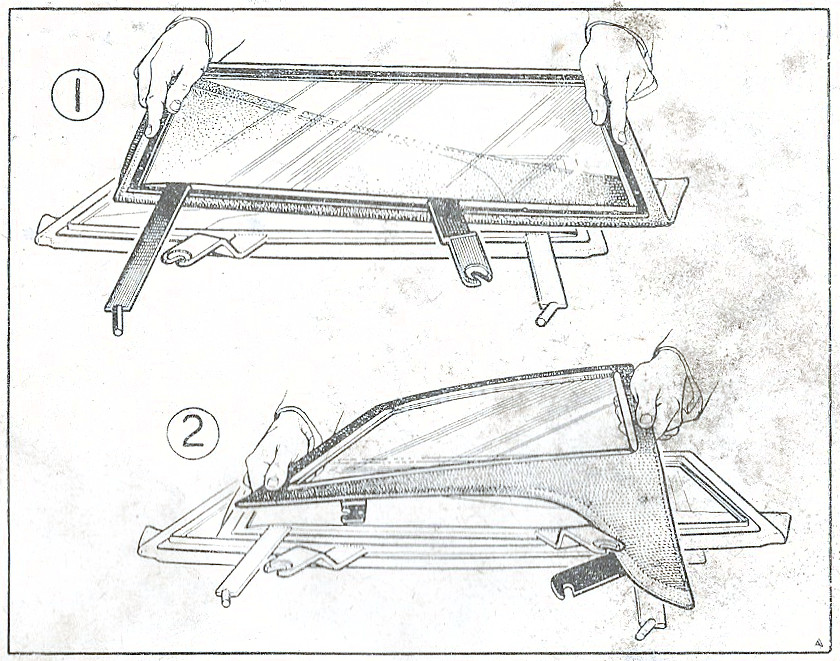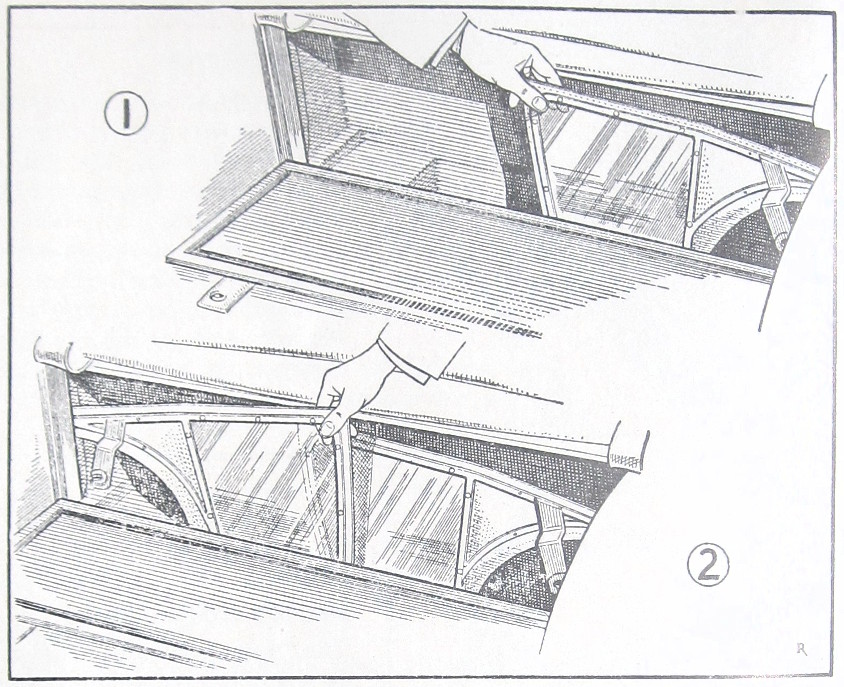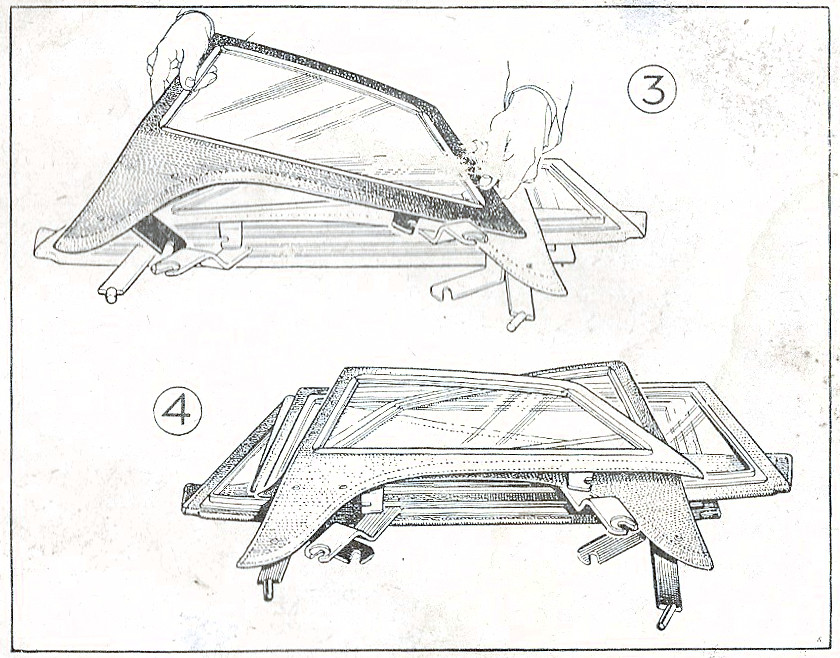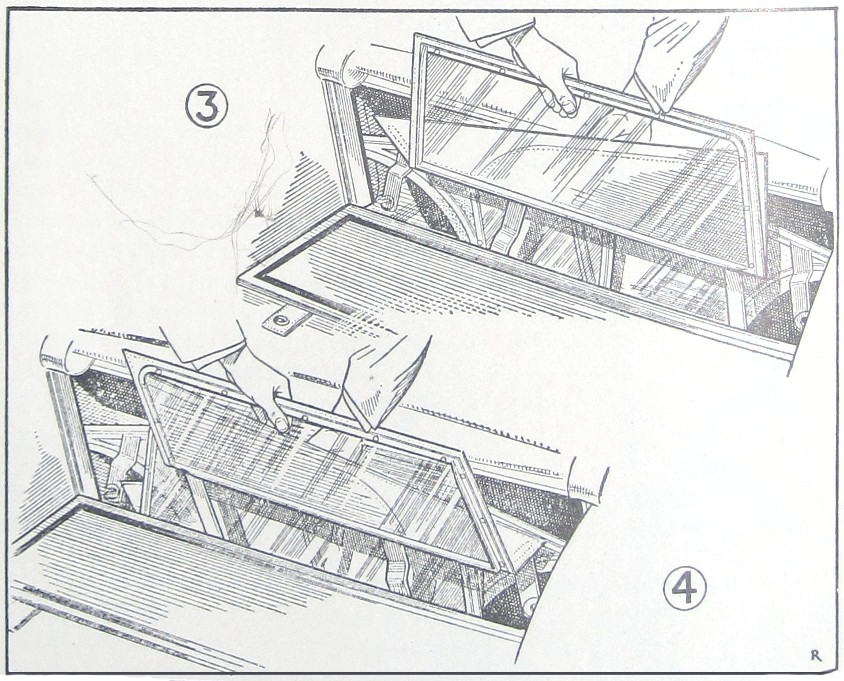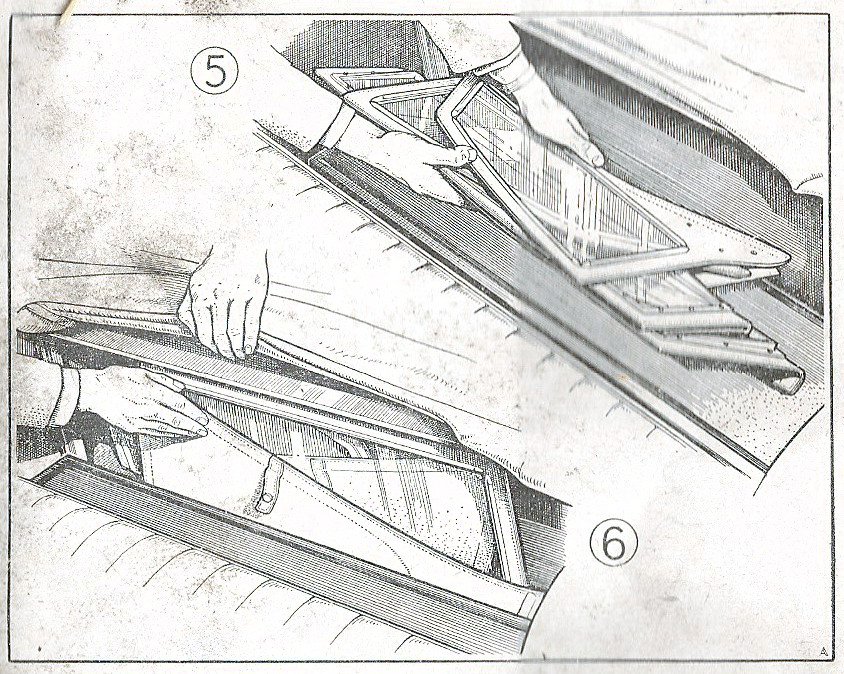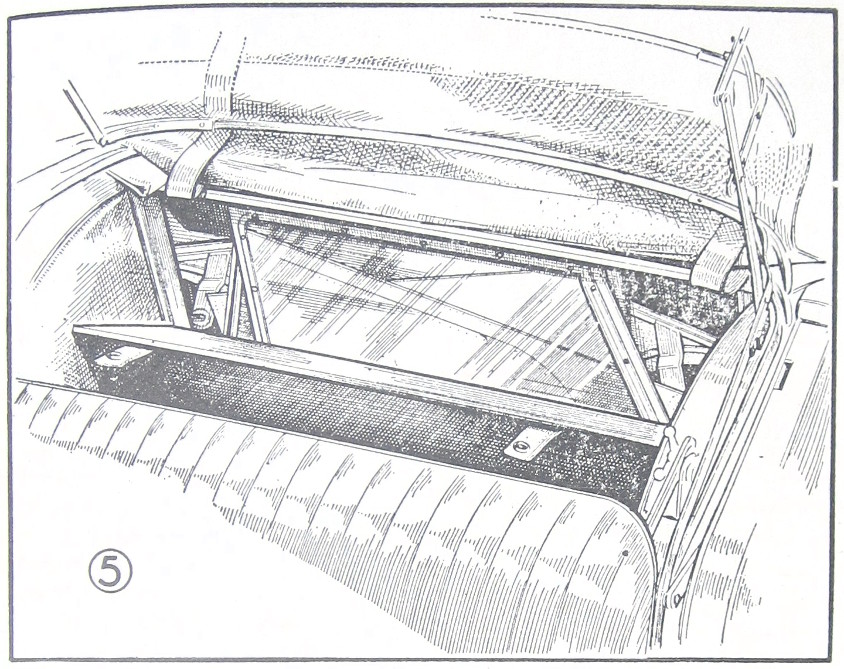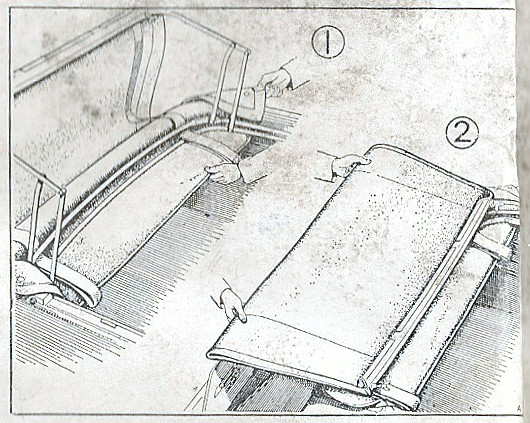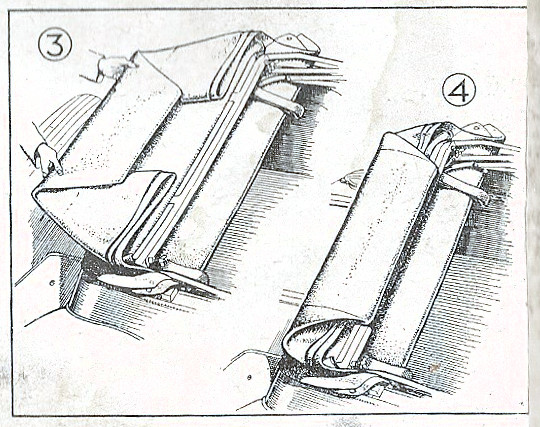DRIVING
Gear Changing
Good Driving • Precautions
Gear Changing
Start in first gear. This is engaged-by declutching, moving the gear lever to the left and forward into the 1st gear position. Gradual release of the clutch pedal allows the car to move forward. Never use force to engage a gear. If it does not engage easily, declutch and repeat the operation. Second gear should be engaged when the car has reached a speed of approximately 6 m.p.h. (10 k.p.h.) by declutching and moving the gear lever straight back through the neutral position. The accelerator should be gently depressed as the clutch is again released, in order to take up the drive smoothly and avoid stalling the engine.
Third gear should be engaged when the car speed reaches approximately 12 m. p. h. (20 k. p. h.).
Top gear should be engaged at approximately 18 m.p.h. (30 k.p.h.).
When changing up, the foot should be taken off the accelerator pedal to allow the engine to slow down.
When experience has been gained, gear changing can be carried out at considerably higher speeds with advantage, approximately 40 m.p.h. (65 k.p.h.) from third to top.
When changing down, the foot should be maintained on the accelerator pedal to allow the engine to speed up.
Good Driving
Always change down early when encountering a gradient. It is bad practice to allow an engine to labour on a hill, and the engine is unable to pick up on the lower gear if changing is left too late.
Always take your foot off the clutch pedal when you are not actually operating it. This saves clutch wear.
It is advisable to engage a lower gear when descending a steep hill, and leave the clutch engaged to obtain the advantage of the braking action of the engine. When braking, leave the clutch in engagement till a speed of approximately 6 m.p.h. (10 k.p.h.) has been reached.
Always apply the brakes gently and progressively. Violent braking throws unnecessary strain on the car and tyres, causes skidding and is dangerous. A careful driver anticipates the need of braking.
Never engage reverse gear when the car is moving forward or a forward gear when the car is moving backwards. Always bring the car to a standstill before engaging a gear which will reverse the direction of movement of the car. Do not coast with the clutch pedal depressed.
Precautions
The hand brake is mainly a parking brake and should only be applied to keep the car stationary when parking or to hold the car while starting on a steep hill.
High-pressure washing equipment tends to cause moisture to penetrate to the brake surfaces. As a precaution, keep the hand brake fully on while washing, and dry out the brakes by applying them lightly immediately the car is driven, keeping them applied for an appreciable distance.
20
THE SIDESCREENS
Front Sidescreens
Rear Sidescreens
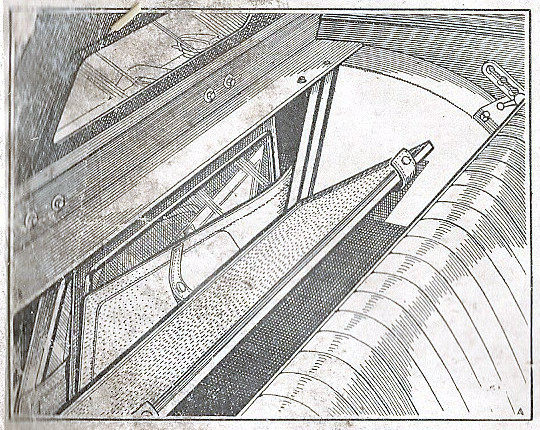
Sidescreens
The screens are stowed in a compartment behind the seat and just forward of the fuel tank. They must all be withdrawn together as a pack and not individually. Care must be taken not to damage them while they are being withdrawn from their housing. A note of their method of packing should be made to facilitate their replacement in conjunction with instructions on pages 22 and 23.
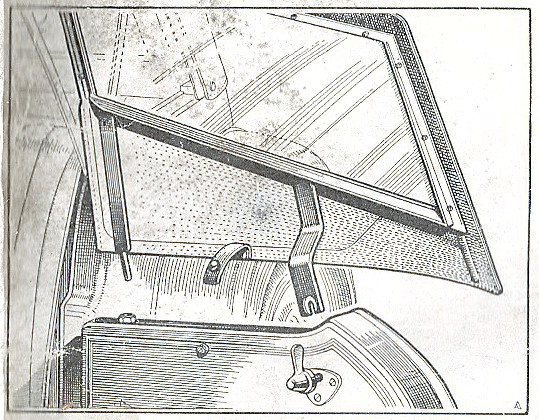
Front Sidescreens
The front sidescreens are attached to the door by means of a pin and socket at the front, and a bracket at the rear , which is clamped in position by a pin and wing nut.
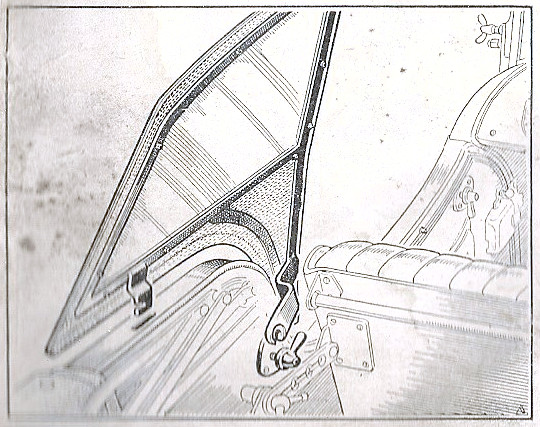
Rear Sidescreens
The rear sidescreens are attached to the body sides by a slotted lug engaging a socket in the upper edge of the body and by a bracket engaging a pin and wine nut at the front end.
21
